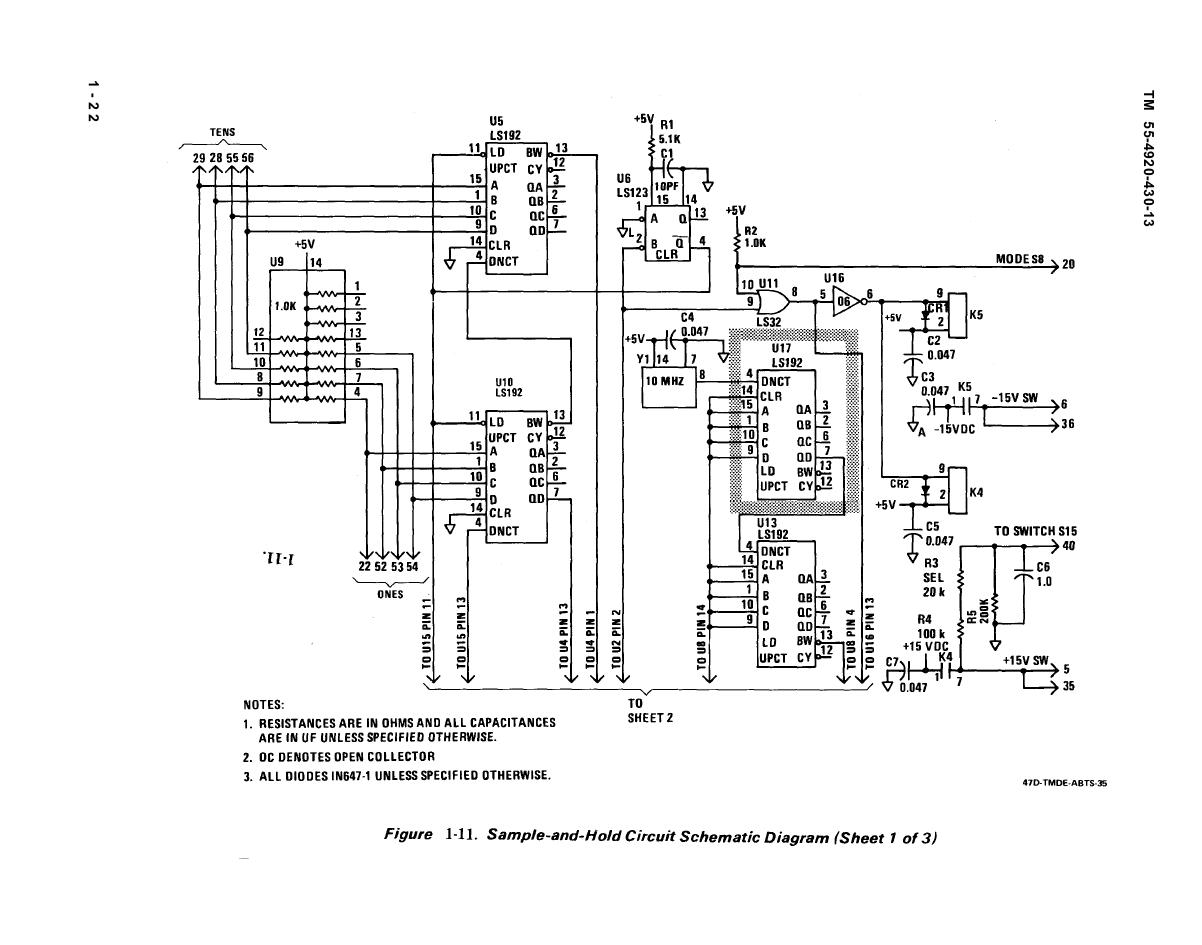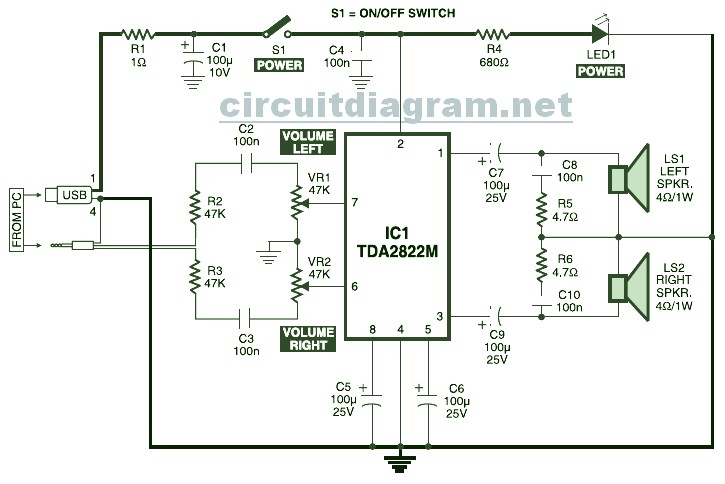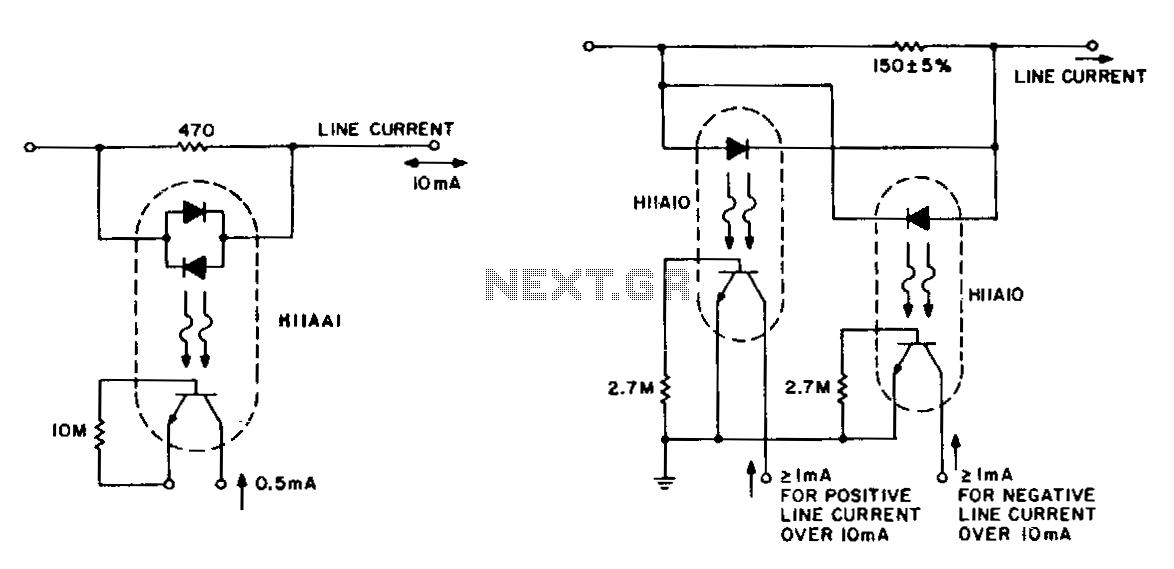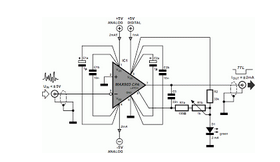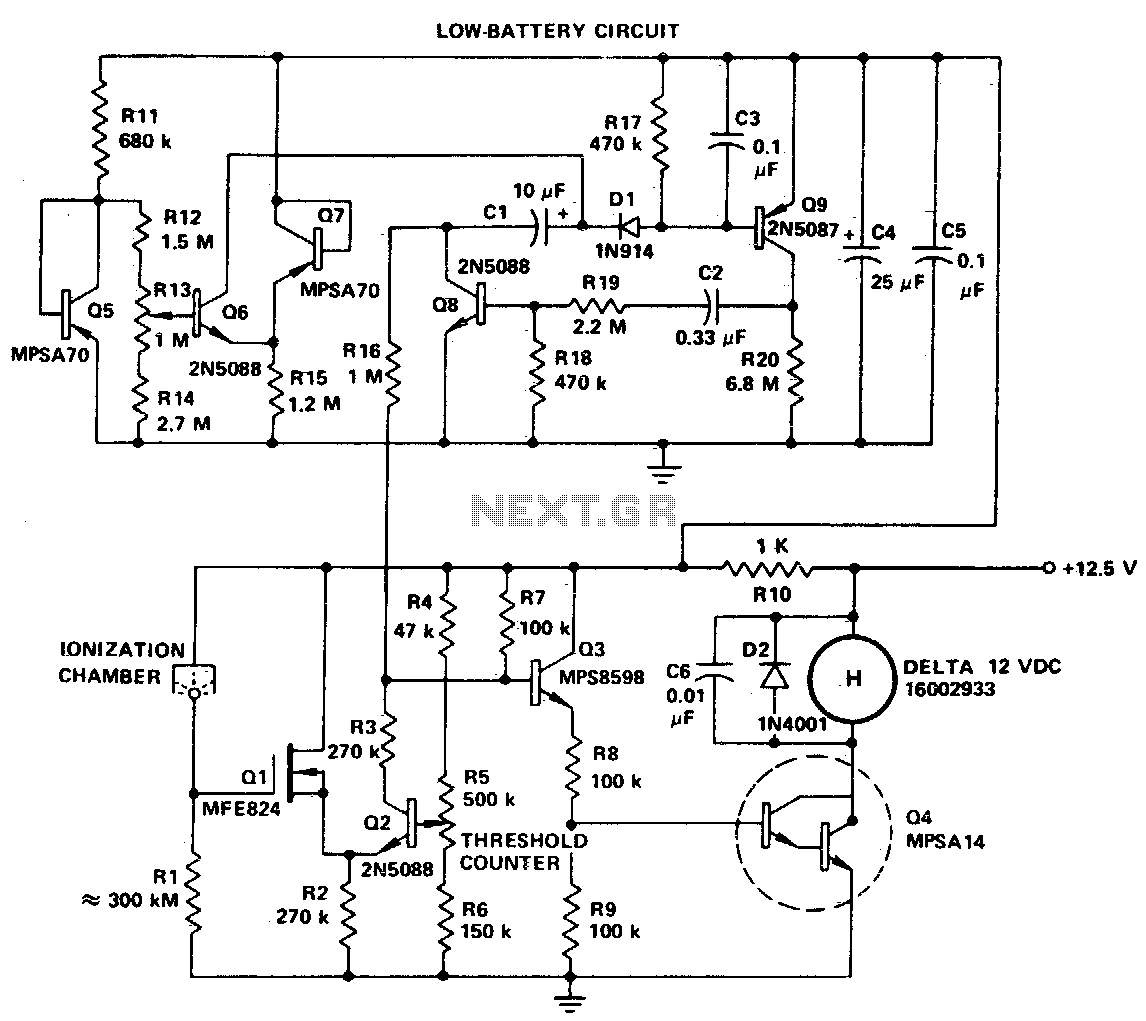
Peak detect and hold

If the voltage at the input exceeds the voltage across the capacitor, the output of the 741 operational amplifier becomes positive, causing the diode to conduct and charge the capacitor to the input voltage minus the forward voltage drop of the diode. Conversely, when the input voltage is less than the voltage across the capacitor, the output of the 741 becomes negative, and the diode becomes non-conductive. To prevent the capacitor from discharging through the input resistance of the subsequent stage, a high input impedance buffer stage (IC2) is implemented. The circuit can be reset using a FET or a similar high impedance device connected across the capacitor.
This circuit utilizes a 741 operational amplifier in a configuration designed for voltage tracking and capacitor charging. When the input voltage surpasses the voltage stored in the capacitor, the operational amplifier's output transitions to a high state, activating the diode. This action allows the capacitor to charge up to a level slightly lower than the input voltage, accounting for the forward voltage drop inherent in the diode. This charging mechanism is crucial for applications that require precise voltage levels to be maintained.
When the input voltage falls below the capacitor's voltage, the operational amplifier's output shifts to a negative state, effectively turning off the diode. This prevents any reverse current flow from the capacitor, thus preserving its charge. The strategic use of a high input impedance buffer stage (IC2) is essential for maintaining the integrity of the capacitor's charge. This buffer stage ensures that the subsequent circuit stages do not load the capacitor, which could lead to undesired discharge and affect the overall performance of the circuit.
The ability to reset the circuit is facilitated through the integration of a FET or similar high impedance device. This component can be connected across the capacitor, allowing for a controlled discharge when necessary, without significantly affecting the circuit's impedance characteristics. The design thus ensures that the capacitor can be recharged and reset efficiently while maintaining high accuracy in voltage tracking applications. Overall, this circuit exemplifies a robust approach to managing voltage levels and capacitor behavior in electronic systems.If the voltage at the input exceeds the voltage on the capacitor, then the output of the 741 goes positive, the diode conducts, and the capacitor is charged up to the input voltage-forward voltage drop of diode. When the voltage at the input is less than that on the capacitor, the output of the 741 goes negative, and the diode cuts off
To prevent the capacitor from discharging through the input resistance of the next stage, a high input impedance buffer stage (IC2) is used. The circuit can be reset by means of a FET or similar high impedance device connected across the capacitor.
This circuit utilizes a 741 operational amplifier in a configuration designed for voltage tracking and capacitor charging. When the input voltage surpasses the voltage stored in the capacitor, the operational amplifier's output transitions to a high state, activating the diode. This action allows the capacitor to charge up to a level slightly lower than the input voltage, accounting for the forward voltage drop inherent in the diode. This charging mechanism is crucial for applications that require precise voltage levels to be maintained.
When the input voltage falls below the capacitor's voltage, the operational amplifier's output shifts to a negative state, effectively turning off the diode. This prevents any reverse current flow from the capacitor, thus preserving its charge. The strategic use of a high input impedance buffer stage (IC2) is essential for maintaining the integrity of the capacitor's charge. This buffer stage ensures that the subsequent circuit stages do not load the capacitor, which could lead to undesired discharge and affect the overall performance of the circuit.
The ability to reset the circuit is facilitated through the integration of a FET or similar high impedance device. This component can be connected across the capacitor, allowing for a controlled discharge when necessary, without significantly affecting the circuit's impedance characteristics. The design thus ensures that the capacitor can be recharged and reset efficiently while maintaining high accuracy in voltage tracking applications. Overall, this circuit exemplifies a robust approach to managing voltage levels and capacitor behavior in electronic systems.If the voltage at the input exceeds the voltage on the capacitor, then the output of the 741 goes positive, the diode conducts, and the capacitor is charged up to the input voltage-forward voltage drop of diode. When the voltage at the input is less than that on the capacitor, the output of the 741 goes negative, and the diode cuts off
To prevent the capacitor from discharging through the input resistance of the next stage, a high input impedance buffer stage (IC2) is used. The circuit can be reset by means of a FET or similar high impedance device connected across the capacitor.
